
HOSTS- Jeremy Burns, Matthew Scott Phillips
TYPE- Theory
DURATION- 47:40
BUMPER MUSIC- "String Quartet No. 4, Movement I"
(Matthew Scott Phillips)
ANNOUNCER- Mike Cunliffe
An understanding of form and analysis can be a great aid in getting to know music better. Like an architect, a composer will structure their music on a foundation of building blocks. It's time to check out the blueprints! In this episode, we will take it from the ground up. We'll start with motives. We'll use them to build phrases and phrases to build periods and phrase groups.
MOTIVE- The smallest possible musical idea. A recurring combination of notes and rhythms that are recognizable, in some shape or form, throughout the piece. Motives can be grouped together as sub phrases, which can grouped together as PHRASES.
NEIGHBORING TONE- This is a note that is a non chord tone that occurs during a chord. It causes a brief dissonance and resolution within a stable chord. This note is approached, by step, from a chord tone and returns to that SAME chord tone.
PHRASE- The smallest possible musical statement that stands on it's own as a complete thought. These can vary in length and typically end in a state of either full or partial repose. This state of repose is also known as a CADENCE. PHRASES are often grouped together to form PERIODS.
PERIOD- When two PHRASES are played back to back and the 2nd of the two has a stronger CADENCE than the prior. This has a question/answer feel to it also known as the ANTECEDENT/CONSEQUENT.
ANTECEDENT- In a PERIOD, this is the first of the two phrases. It conveys a sense of questioning.
CONSEQUENT- In a PERIOD, this is the second of the two phrases. It conveys a sense of answering or response.
CADENCE- The harmonic goal, or resting point, of a chord progression or musical passage.
AUTHENTIC CADENCE- Considered the strongest of all cadences, this is typically a DOMINANT (V) chord resolving to the TONIC (I) chord.
HALF CADENCE- Considered the weakest, this cadence often leaves one desiring a greater resolution and a "cliff hanging" effect of suspense. The HALF CADENCE typically resolves to a DOMINANT (V) chord.
DECEPTIVE CADENCE- This usually occurs when a chord progression ends on a VI chord (or any chord that includes scale degree 1) when you would expect to hear the TONIC (I) chord.
MOTIVE (MOTIF)
The MOTIVE is a small group of notes that form an idea. Circled below we have a MOTIVE, within the first three notes of the melody, that contains two elements that reoccur throughout this short melody:
1. The RHYTHMIC pattern of 2 1/16 notes followed by an 1/8th note.
2. The MELODIC pattern of a chord tone (G) followed by a NEIGHBORING TONE (F#) and returning back to the same note (G).
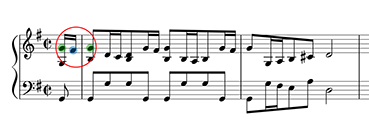
Textural reduction of "Brandenburg Concerto No. 3 in G major, BWV 1048"
(Johann Sebastian Bach)
PHRASE
The PHRASE is a group of MOTIVES that work together to form a complete thought. This will often end in a CADENCE, or a resting point. If a PHRASE is like a sentence, then the CADENCE can be compared to it's punctuation mark. The below example consists of two PHRASES. The first one ends with an IMPERFECT AUTHENTIC CADENCE (I.A.C) and the one that
follows ends with a stronger
PERFECT AUTHENTIC CADENCE (P.A.C).
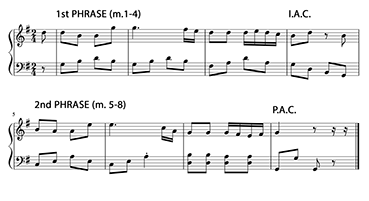
Textural reduction of "Piano Sonatina in G Major, Opus 36, II"
(Muzio Clementi)
PERIOD
The PERIOD is a group of PHRASES that work together to form a bigger idea. This will give a small story or a scenario with in a piece of music. Maybe this can be compared to a paragraph. The above example is that of a PERIOD because it contains a more than one PHRASE.
PARALLEL PERIOD
The beginning material of BOTH phases will be similar in a parallel period. It doesn't have to be note for note. Below we see how the first measure of each phase looks and sounds almost identical. The 1st phrase ends with a HALF CADENCE
and the 2nd ends with an
IMPERFECT AUTHENTIC CADENCE.
These two phrases have an ANTECEDENT/CONSEQUENCE relationship. The 1st phrase is the ANTECEDENT (the question) because is ends with a weaker half cadence. The 2nd phrase is seen as the CONSEQUENCE (the answer) because it's cadence (P.A.C.) is more resolving.

CONTRASTING PERIOD
The beginning material of both phases will NOT be similar in a contrasting period.
PHRASE GROUP
Typically more than two PHRASES, often three, the phrase group contains one or two similar phrases but only the final one has a conclusive resolution.
DOUBLE PERIOD
The DOUBLE PERIOD contains two periods in which the first period has a weaker resolution than the second. Below we see this period is repeated twice. On the first period, the melody is played on piano and ends on a half cadence. The second period has a stronger resolution than the first. It is also varied from the first period because the melody is now being played by the melodica (harmonica sounding instrument).
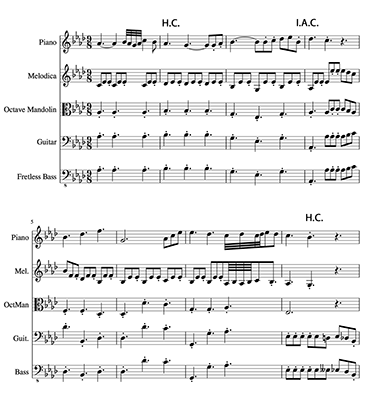
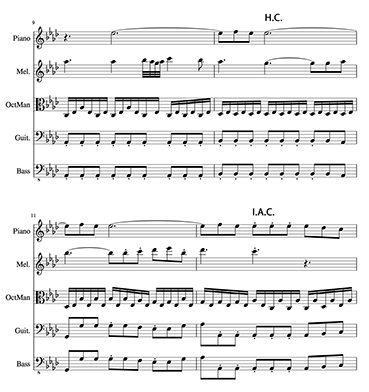
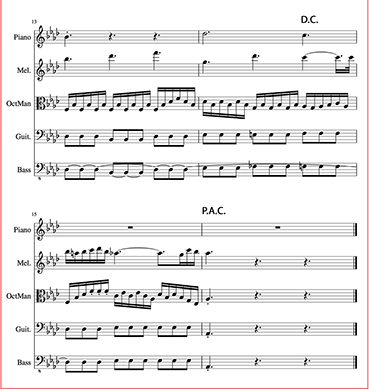
REPEATED PERIOD
Just like it sounds, this is one period that is repeated.
-Try actively listening for cadences. They will often land at a resting point (often in harmony and in meter).
-When listening for phases and cadences start off simple. Maybe listen to Bach, Mozart or some earlier composers before tackling Mahler, Berlioz or some of the later era classical composers.
-Obviously, don't limit yourself to classical music. Listen for these elements in jazz, blues, bluegrass or whatever your favorite genre may be. These elements are universal to all music.
-Start thinking about labeling phrases and periods with lowercase letters (ex. aba') When we get into identifying forms this will be the language we speak.
